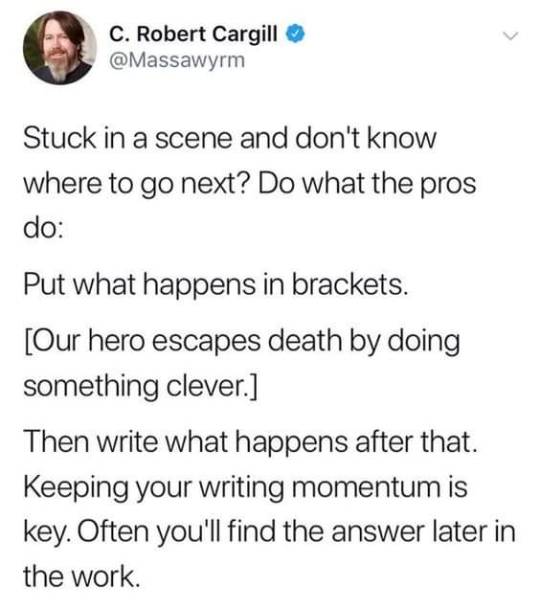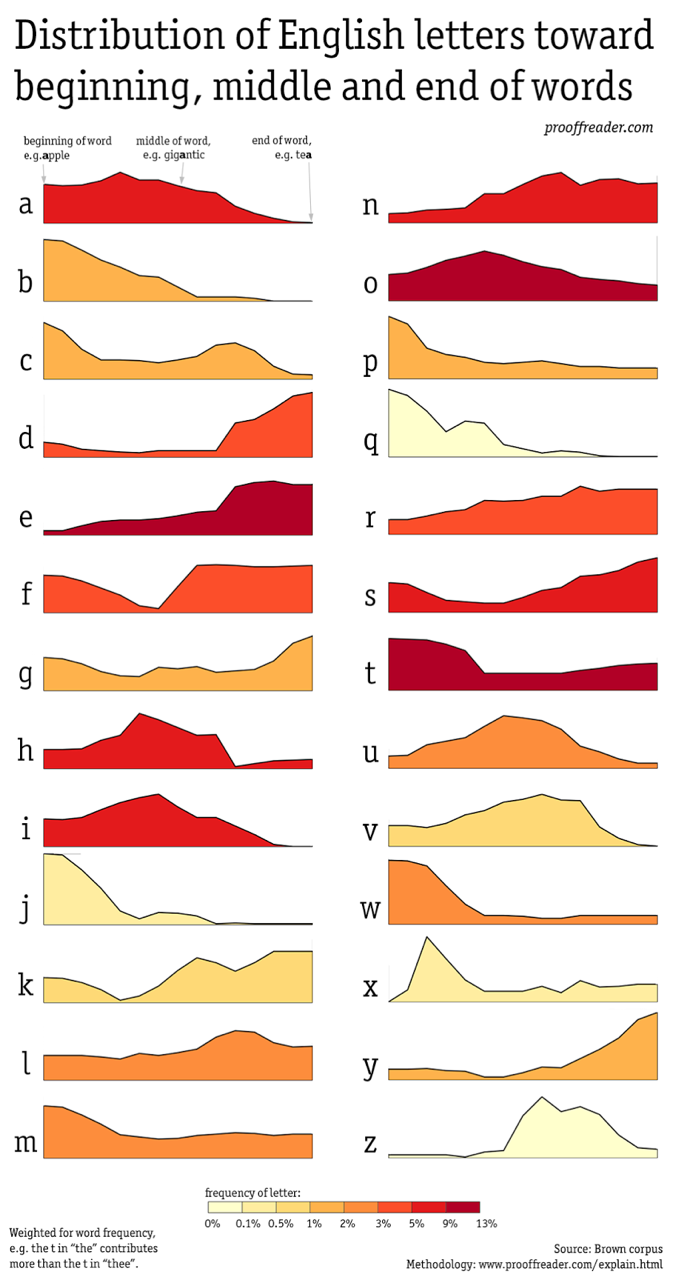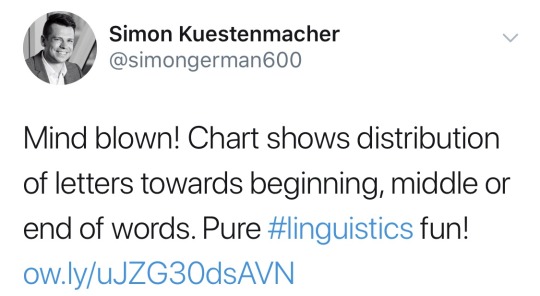Text
I write a lot of fantasy/Medieval whump, so in that vein lets talk Things Low-Tech/Medieval/Fantasy Healers Might Do When Checking A Sick Patient That Don't Require Modern Medical Equipment Or Terminology But Gives The Vibe That They Know What They're Doing:
Feel their pulse (in the wrist, the side of their neck, or even a temple)
Check their forehead for a fever
Listen to their chest/back (you can hear rattling or crackling in the lungs of someone with a lung infection such as bronchitis or pneumonia)
Tapping their back behind each lung (likewise - an inflamed lung will sound congested and less hollow than a healthy one)
Feel for swollen glands behind their ears
Gently feel for any swelling or tightness along their stomach
On that note, gently pressing on an are of pain in the stomach area (to test for appendicitis)
Get them to open their mouth to look down their throat
Check their eyes for redness, light sensitivity, yellowing, or dilated pupils
Check them for a rash, especially the torso, behind the ears, and along their forehead (measles rash usually starts near the ears and along the hairline, scarlet fever begins on the trunk and spreads to the rest of the body; chicken pox I think just sort of appears all over though idk)
Check if their skin is flushed or jaundiced
Tap along their cheekbones - if this causes pain they may have a sinus infection
I'm not a medical professional and this is ONLY for writing purposes, also this is all based on a variety of medical information I've read in books and online but as I said I am not a professional just someone with a weird obsession, feel free to fact check me - or add your own
1K notes
·
View notes
Photo

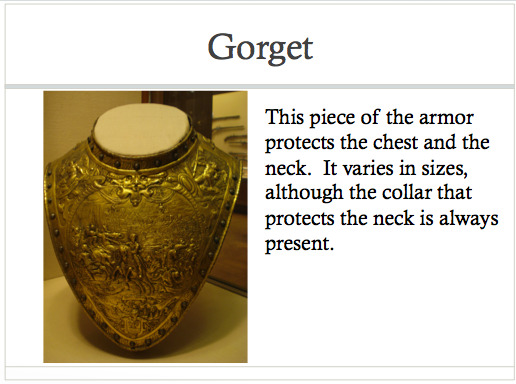



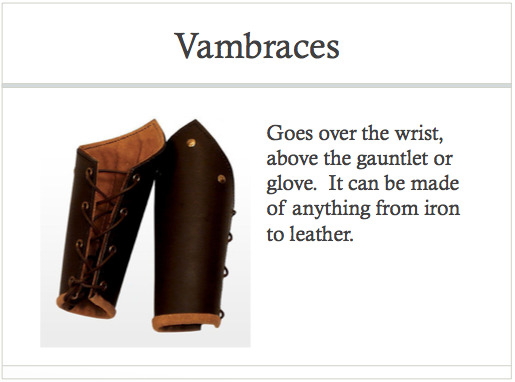
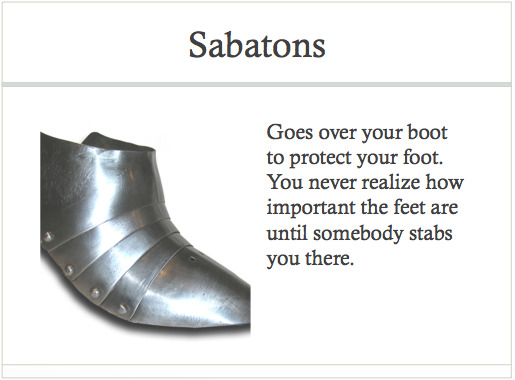
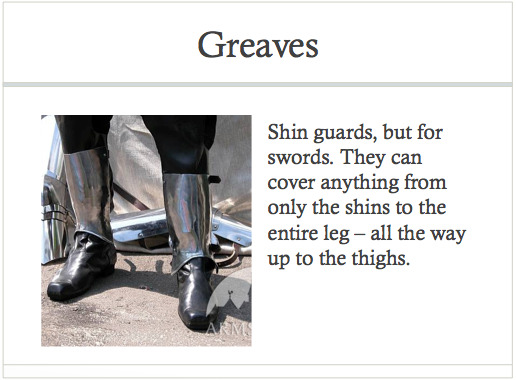

A breakdown of medieval armor, since a lot of pieces are required to create a full suit.
281K notes
·
View notes
Text
heavenly words
aliferous: (adj.) having wings
apricity: (n.) the warmth of the sun in the winter
aspectabund: (adj.) letting emotion show easily through the face or eyes
aurora: (n.) dawn
balter: (v.) to dance gracelessly, but with enjoyment
cafune: (n.) the act of running your fingers through the hair of someone you love
catharsis: (n.) release of emotional tension
charmolypi: (n.) a mixed feeling of happiness while being sad
diaphonous: (adj.) light, translucent, and delicate
dulcet: (adj.) sweet
ephemeral: (adj.) fleeting
ethereal: (adj.) extremely delicate and light in a way that seems too perfect for this world
eutony: (n.) the pleasantness of a word’s sound
halcyon: (adj.) a period of time in the past that was idyllically happy and peaceful
illecebrous: (adj.) enticing
irenic: (adj.) promoting peace
kalon: (n.) beauty that is more than skin-deep
kalopsia: (n.) the seeing of things as more beautiful than they actually are
lacuna: (n.) a blank or missing part
lilt: (n.) a pleasant gentle accent
ludic: (adj.) full of fun and high spirits
meraki: (n.) to do something with love or soul
nefelibata: (n.) cloud-walker; one who lives in the clouds of their own imagination
nepenthe: (n.) something that makes one forget their sadness
nubivagant: (adj.) wandering in the clouds
numinous: (adj.) feeling fearful yet awed and inspired
orphic: (adj.) beyond ordinary understanding
pyrrhic: (adj.) won at too great a cost
pulchritudinous: (adj.) breathtaking, heartbreaking beauty
scintilla: (n.) a tiny trace or spark of a feeling
selcouth: (adj.) unfamiliar, strange, yet marvelous
sirimiri: (n.) a light drizzle of rain
susurrus: (n.) whispering, murmuring, or rustling
sweven: (n.) a dream
temerate: (v.) to break a bond or promise
viridity: (n.) innocence
yonderly: (adj.) absent-minded
147K notes
·
View notes
Text
it really ain’t that deep bro
why are all prompts from those shitty writing prompt blogs always the same. its always some shit like “every person is born with the taco bell logo tattooed on their forehead. the logo changes colors like the tumblr logo during pride month when the person who is going to t-bone you in a 4 way intersection is nearby. one day your taco bell logo starts flipping its shit when you wake up next to the love of your life. you feel betrayed.”
121K notes
·
View notes
Text
I took some historical sword-fighting lessons to make the fights in my novel more realistic - here’s what I learned.

To make the fighting scenes in my low fantasy novel more realistic, I went to see a trainer for historical sword-fighting last week, both to barrage her with questions and to develop realistic choreographies for the fight scenes in the novel. Since I figured some of what she told me might be useful for you too, I put together a small list for you. Big thanks to Gladiatores Munich and Jeanne for making time! (Here are some more pictures if you’re interested.)
Caveat: I’m by no means a sword-fighting expert myself, so take these nuggets with a grain of salt – I might have misremembered or misinterpreted some of the things Jeanne told me. If I did, feel free to tell me.
1.) Weapon choices need to make sense
Let’s start with a truism: always ensure your character’s weapons make sense for a.) their profession, b.) their cultural background and c.) the environment they’re going to fight in. A farmer probably couldn’t afford a sword and might use a knife or threshing flail instead, and someone who doesn’t want to be noticed probably wouldn’t be milling about sporting a glaive or another large weapon. Also, soldiers native to a country with wide open plains would be more likely to carry long-range melee weapons such as spears or large swords, than those from a country consisting of mostly jungle or dense forests. The same applies to situations: if your character is going to be fighting in close quarters (even just a normal house), he’d get little value out of a spear or even a longsword, as there’d be no space to swing it effectively.
2.) Boldness often beats skill
In real swordfights, recklessness was often more important than technique. The fighter less afraid of getting injured would often push harder, allowing them to overpower even opponents with better technique.
3.) Even a skilled fighter rarely stands a chance when outnumbered
While a skilled (or lucky) fighter might win a two-versus-one, it’d be extremely unlikely for even a single master swordsman to win against superior numbers, even just three and if they’re below his skill level. The only way to plausibly pull this off would be to split the opponents up, perhaps by luring them into a confined space where you could take them on one by one. The moment you’re surrounded, you’re probably done for – because, unlike in Hollywood, they wouldn’t take turns attacking but come at you all at once.
4.) Dual-wielding was a thing
… at least in some cultures. I often heard people say that people using a weapon in each hand is an invention of fiction. And while my instructor confirmed that she knew of no European schools doing this—if they did, it’s not well-documented—she said it was a thing in other cultures. Example of this include the dual wakizashi in Japan or tomahawk and knife in North America. However, one of the biggest problems with the depiction of dual wielding in novels/movies/games are the “windmill”-type attacks where the fighter swings their weapons independently, hitting in succession rather than simultaneously. Normally you’d always try hitting with both weapons at once, as you’d otherwise lose your advantage.
5.) Longswords were amazing
Longswords might seem boring in comparison to other weapons, but they were incredibly effective, especially in combat situations outside the battlefield. The crossguard allowed for effective blocking of almost any kind of attack (well, maybe not an overhead strike of a Mordaxt, but still), the pommel was also used as a powerful “blunt” weapon of its own that could crack skulls. Though they were somewhat less effective against armored opponents, the long, two-handed hilt allowed for precise thrusts at uncovered body parts that made up for it.
6.) “Zweihänder” were only used for very specific combat situations
Zweihänder—massive two-handed swords—were only used for specific purposes and usually not in one-on-one combat as is often seen in movies or games. One of these purposes was using their reach to break up enemy formations. In fact, one type of two-handed sword even owed its name to that purpose: Gassenhauer (German, Gasse = alley, Hauer = striker)—the fighters literally used it to strike “alleys” into an enemy formation with wide, powerful swings.
7.) It’s all about distance
While I was subconsciously aware of this, it might be helpful to remember that distance was an incredibly important element in fights. The moment your opponent got past your weapons ideal range, it was common to either switch to a different weapon or just drop your weapon and resort to punching/choking. A good example of this are spears or polearms—very powerful as long as you maintain a certain range between you and your opponent, but the moment they get too close, your weapon is practically useless. That’s also why combatants almost always brought a second weapon into battle to fall back one.
8.) Real fights rarely lasted over a minute
Another truism, but still useful to remember: real fights didn’t last long. Usually, they were over within less than a minute, sometimes only seconds – the moment your opponent landed a hit (or your weapon broke or you were disarmed), you were done for. This is especially true for combatants wearing no or only light armor.
9.) Stop the pirouettes
Unfortunately, the spinning around and pirouetting that makes many fight scenes so enjoyable to watch (or read) is completely asinine. Unless it’s a showfight, fighters would never expose their backs to their opponent or even turn their weapon away from them.
10.) It still looks amazing
If your concern is that making your fight scenes realistic will make them less aesthetic, don’t worry. Apart from the fact that the blocks, swings and thrusts still look impressive when executed correctly, I personally felt that my fights get a lot more gripping and visceral if I respect the rules. To a certain extent, unrealistic and flashy combat is plot armor. If your characters can spin and somersault to their heart’s content and no one ever shoves a spear into their backs as they would have in real life, who survives and who doesn’t noticeably becomes arbitrary. If, on the other hand, even one slip-up can result in a combatant’s death, the stakes become palpable.
That’s about it! I hope this post is as helpful to some of you as the lessons were to me. Again, if anything I wrote here is bollocks, it’s probably my fault and not Jeanne’s. I’ll try to post more stuff like this in the future.
Cheers,
Nicolas
45K notes
·
View notes
Note
Any advice for writing an enemies to friends to lovers fic? I've never written one before but I came up with one recently.
I’ve had a lot of practice with writing friends to lovers but not much when it comes to enemies to friends to lovers. Thankfully, I’m sure that a lot of the Blog know exactly how to do it up right.
Blog? What makes for a good enemies to friends to lovers fic? Writers share your tips for how to go about it. Readers share the things that you love most about the trope and the moments you love to see!
461 notes
·
View notes
Text
Which of your OC’s would reblog their own callout?
129 notes
·
View notes
Text
i’ve been doing my homework on how to break into a writing career and honestly. there’s a Lot that i didn’t know about thats critical to a writing career in this day and age, and on the one hand, its understandable because we’re experiencing a massive cultural shift, but on the other hand, writers who do not have formal training in school or don’t have the connections to learn more via social osmosis end up extremely out of loop and working at a disadvantage.
162K notes
·
View notes
Text
i wish there was more talk on tumblr about hypersexuality as a response to trauma, tbh. i see a lot of talk about asexuality and sex-repulsion due to trauma, but i rarely see people talk about the opposite. idk, its a difficult subject i suppose
98K notes
·
View notes
Text
Writing Playlists
Most of the time I can’t listen to music when I write. It just tends to be too distracting, especially if the songs have lyrics. However, I can say that when the time is right, having a bomb playlist can really get me into the mood of the scene I’m working on and allows the words flow out of me like some kind of typing machine. So I’ve grouped together some of my previously made playlists for y’all that I think could help when writing with certain types of genres or scenes.
Fantasy
hades & persephone parts i and ii: part one is dark electropop, part two is more alternative. could inspire even if you aren’t writing a Hades and Persephone narrative.
The Crown Lies Heavy: based on a request that was a whole novel within itself. for when you want to write of twisted courts, never ending festivities, and abandoned castles.
Goth Witch: spooky pop for the witch in all of us.
Modern Witch: same vibe to Goth Witch, so if you end up liking that one check this one out too I guess.
Space Witch: alt pop with a spacey folk twist. spans from Beach House to Kacey Musgraves.
Nature Coven: acoustic and folksy for when you want to feel like you’re picking herbs in the countryside.
Dark Fantasy: featuring hype-up anthems and haunting ballads for writing of magic battles, from potions to swords. this playlist was engineered to be listened to in order, so it kind of has an arc of its own.
Dark Fae: mystical melodies from another world that may not always be so kind.
Warrior: for those who slay monsters. think of this as an addition to Dark Fantasy and vice versa.
Sci-Fi / Dystopia
Swamp City: I actually made this playlist for a story I wrote. a mix of slurried indie rock and electronic for when you want to escape reality.
Candy Apocalypse: the robots are hot pink. they steamroll the city and play Charli XCX while doing it.
trip_pop: strange pop tunes that’ll transport you to unknown places.
Space Odyssey / Night Magic: the former is an extension of the later. for anything from funky alien vibes for being lost in the stars.
When The World Was At War We Kept Dancing: partying until the end of the world to prove a point.
Serenity Base Hotel and Casino: inspired by the aesthetics of Tranquility Base Hotel & Casino by the Arctic Monkeys. a spacey retro feel from artists new and old.
Romance
Vintage Crush: cute little love songs for fluffy love stories.
Soft Love: for when you want to whisper sweet nothings. soft pop and gentle ballads.
La Lune: you would run through museums to find her. quiet evenings playing the piano under the stars. red wine, pressed flowers, fresh ink, and long skirts.
Sunday Mornings With You: a mix of folk and jazz that’ll help you sink into that writing feeling full of warm, fuzzy feels.
Sultry: for when you need to write scenes with some passion.
Femme Fatale: same as Sultry, with a twinge of rock.
Romantic Thriller: like Dark Fantasy, this playlist also has an arc to it. builds in intensity and then ends in a hush.
Golden Hour: sultry evening alt pop ballads with an atmospheric feel.
Let Me Down Slowly: pop and alternative unrequited love songs for when things need to get angsty. 10/10 will tear up a little bit.
Contemporary / Teen
That’s Just How It Is: wistful folk tunes for when you feel like life is just passing you by.
This Is Our Shitty Teen Romance: as the title suggests, pop tunes with some sass and exhaustion.
Teen Movie Sountrack: songs that you’ll want to blare from the car radio as you drive down the highway with your friends.
Mixtape: Sun Spirit: bubbly and sunny songs for those who look on the bright side.
Mixtape: Moon Child: smooth and ethereal songs for those who aren’t afraid of the dark.
Fight Scenes
Songs to Fuck Shit Up To: well that about sums it up, doesn’t it?
Shot Of Hype: songs that’ll make you want to break down a door. a mix of rock, punk, and a splash of rap.
Kiss It: badass rock songs from some of my favorite female rock singers. songs to stick it to the man.
General Writing / Ambient
Ambient Pop: pop with a chill flair.
Softens: my favorite chill playlist I’ve ever made that always ends up inspiring me in one way or another. features acoustic covers and songs that’ll make you feel like you’re drifting away.��
Bedroom Cool: the perfect blend of indie, low fi, and bedroom pop from my favorite smaller names in music. the playlist that I never expected to get as big as it did.
Warm Comfort: acoustic and folk with a smidgen of country. songs that’ll make you feel, well, warm and comfortable.
Jesus Christ how many playlists have I made? I hope y’all find this helpful!
139 notes
·
View notes
Text
What to do when your novel starts to feel stagnant
Because novels take so long to perfect and take up so much space in our minds, the story can start to feel stagnant after a while. Maybe you have less faith in your manuscript than you did at the start. Here are some tips for adding some oomph to your wip:
1. Make one of your primary/secondary characters an undercover villain
I recently decided to do this with my wip and I honestly think that it has elevated the plot so much.
This will help to complicate the conflict in the novel, as well as the relationships between the characters
A plot twist (especially one that is introduced during the climax) can be a great way to take your work to the next level.
Leaving little Easter eggs throughout the novel, but still being subtle will have the reader engaged, and will help get you excited about your project again.
This is merely a suggestion. Any well-written plot twist can apply.
2. Introduce a romantic subplot
If your wip doesn’t have a romantic subplot, I would suggest adding one if it suits the type of novel and if you feel that you’d want to write a bit of romance.
A romantic subplot adds an extra layer of tension, anticipation and immersion to a novel. Oftentimes, it will be this story line that keeps the reader hooked.
If you already have a romantic subplot (or perhaps you’re writing a romance novel), but it seems a bit flat, try building up the tension for longer. Premature gratification may leave readers unexcited for the rest of the book. You could also try to add more external conflict or have your couple face a struggle that is unique to them.
3. Employ additional styles of writing
Add diary entries, letters, newspaper articles, stream-of-consciousness passages or even a scene that consists solely of dialogue. Add a small passage at the end of every chapter from the villain’s point of view. Go crazy.
Interesting forms of writing can be used to convey deeper aspects of your novel and can add extra intensity. These additions could be used to give the reader clues as to an approaching plot twist or can be used to convey the history/social environment of your world. It can also provide insight into characters’ thoughts and feelings.
If you would like me to do a post based on these types of texts and how you can use them in creative writing, comment on this post.
4. Write in the present tense
Most novels are written in the past tense and this can work very well. However, if your manuscript starts to feel stagnant, it might be time to switch to present tense. I know that rewriting what you have in a different tense sounds like hell, but it could mean the difference between a good novel and a great one.
Present tense creates a sense of immediacy. The stakes seem higher, the conflict more immersive and the characters closer to the reader. This is because it doesn’t feel like the reader is being told a story that happened in a far-removed time, but rather like the reader is seeing everything as it happens.
This is especially good for thrillers, apocalyptic works, action, horror or any other genre that is fast-paced and full of tension.
5. Complicate your main character’s background
I recently decided to turn my protagonist into an ex-cage fighter and it has really brought back my excitement for working on this project.
By adding depth to your character’s back story, you add layers to their personality. This will make the way they interact with other characters more interesting, as well as open up new plot avenues.
This is especially useful when you feel that your main character is not developed/complex enough.
So, bring in interesting family relationships, past occupations, secret hobbies, bad relationships, problems with the law, encounters with life-changing individuals etc. It will make your main character all the more engaging.
That’s all I have for now. I hope this is helpful. If you would like a Part 2, please comment. If you have any questions regarding reviving a stagnant manuscript (or any other aspect of creative writing), please do not hesitate to ask. My ask box and DMs are always open for fellow writers!
Reblog if you found any of this useful!
Do you have any tips of your own? Comment!
Follow me for similar content
3K notes
·
View notes
Text
Quick Facts: Ancient Celts
Skin: Commonly described as fair, clear or white. (ref: Diodorus, Ammianus Marcellinus)
Hair: Long hair was the fashion, described as “thick and shaggy like a horse’s mane”, even satyr-like due to the treatment with limewater; the aristocracy favored large moustaches; and the Celts generally shaved their entire bodies, Caesar’s account further proven by iron razors and sprung iron shears found at the site of La Tene. Hair was variously mentioned as blond, flaxen or tawny, but either way further lightened artificially with lime. (ref: Caesar)
Height: Frequently described as very tall - taller than the Romans, the women bigger and stronger than Roman women. (ref: Diodorus, Marcus Borealis)
Fitness: The Celts are frequently attributed by historians with great physical prowess (“with rippling muscles”). In fact, fitness was so inherent to their customs, that any man exceeding the standard size was punished. (ref: Strabo)
Food/Diet: Grains, fruits, nuts, meat. Caesar describes them as living on “milk and meat”; Poseidonius also points out bread and fish. Cattle, dogs, hares, fowl and geese they grew only for entertainment or practical use.
Fashion: Striking clothing, dyed and embroidered in bright colors, striped or checkered cloaks. They wore form-fitting pants called “bracae”, tunics that were red, purple or multicolored, elaborate torcs as symbols of power, brooches, bracelets, hairpins and rings. They took great interest in their appearance, so that not even the poorest wore soiled or ragged clothing. Even cosmetic grinders have been found in Iron Age British contexts, signalling they might have used eyeshadow or blush. (ref: Diodorus, Flavius Arianus, Propertius, Amnianus Marcellinus)
Tattoos: The Britons were unique for their tattoos and the blue woad they painted their bodies with. (ref: Caesar)
Music: The most famous Celtic instrument is the Carnyx, styled in the form of an open-mouthed boar, emitting harsh, discordant sounds suited for battle. (ref: Diodorus)
Personality: High-spirited, hospitable, fond of feasting, straightforward, frank, courageous, etc. (ref: Diodorus)
Notable traditions: The head as the throne of the soul, hence the custom of severed heads as trophies; comradeship was important (those with most followers considered most powerful). (ref: Polybius)
Traveling: Some tribes were nomadic, ridden with wanderlust, others settled down in farming communities.
Sexuality: Homosexuality was common and they were very nonchalant about it, showing they were comfortable with varying sexual orientations as well as sexuality in general. (ref: Athenaeus)
Spirituality: Animism (the notion that everything is animated with life, including nature), the worship of nature, a vast pantheon of gods that differed from tribe to tribe, but had common deities as well (ie. Cernunnos).
5K notes
·
View notes
Text
Which character is the worst interior decorator? The best?
#ye’d think björn’d be the best cuz hes got an eye for pretty things (i mean just look at his husband) but hes the worst bc hes a hoarder#nadia is probably the best bc they have access to queer eye
12 notes
·
View notes


